The National Survey of Family Growth has recently released data on the ages at which Americans lost their virginity. The figures themselves might not come as a surprise, but when represented graphically, they may cause you to see the occurrence of the life event in a whole new way.
The group administering the survey was overseen by the Centers for Disease Control and Prevention and was based on 2013–2015 public use data files.
The big caveat here is that this only covers heterosexual subjects. One would hope that it would be more inclusive of such a large and distinct segment of the population. Still, it’s likely that in future years, more sexual orientations and relationships will be included in the study.

Here’s the graph, with the later years showing a little statistical noise. (People clearly didn’t regain their virginity from 39–40; it was a function of parsing the data):
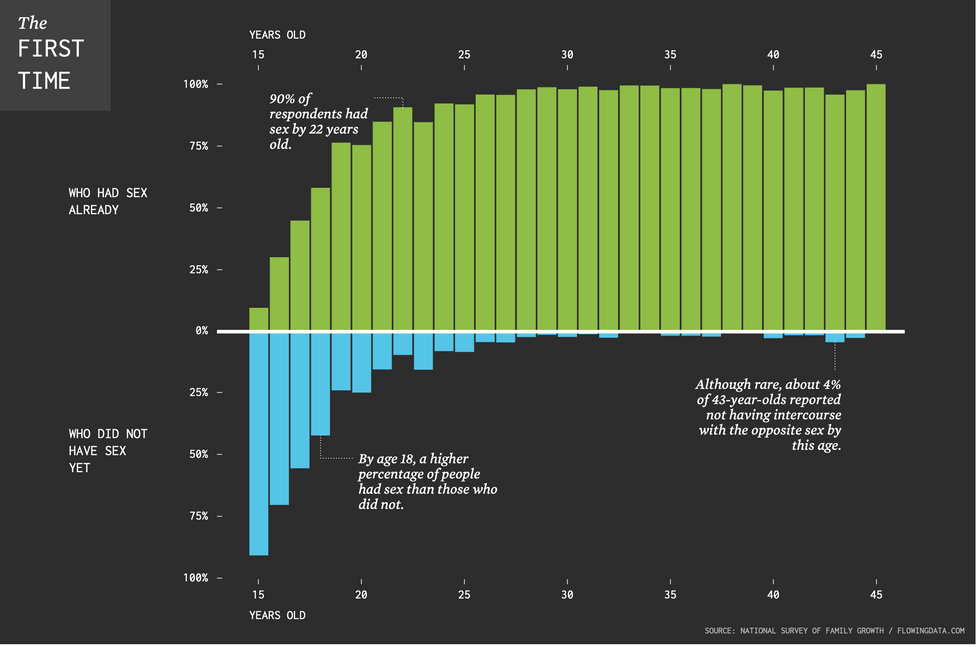
As you can see, between ages 16–20, half the population lost their virginity, and by 22 years of age, 90% of the population had. And if you haven’t lost your virginity by age 30, the likelihood that you ever will falls dramatically. That’s not a pessimistic statement, but, instead, could have more to do with general disinterest, a physical disability, or an inability to perform sexually.
As you can see from the chart, the number tends to stabilize at a 4 percent virginity rate at age 43. The data only covered subjects aged 15–45, so it’s unclear how much further that 4 percent would fall over the later years of life.
In the years since
In the years since the survey, the numbers have shifted slightly. More recent National Survey of Family Growth data shows the average age of a woman’s first time is now 17.1, up slightly from the earlier estimate, while men remain steady at 17.2. Fewer teens are starting early, too, only about a third of U.S. high school students in 2023 said they’d ever had sex, the lowest share in the survey’s three-decade history. And that late-virgin tail on the chart? It may be growing. Other national studies have found more young adults, especially men, going a year or longer without sex, and a record number of Americans now living single.
This article originally appeared two years ago.








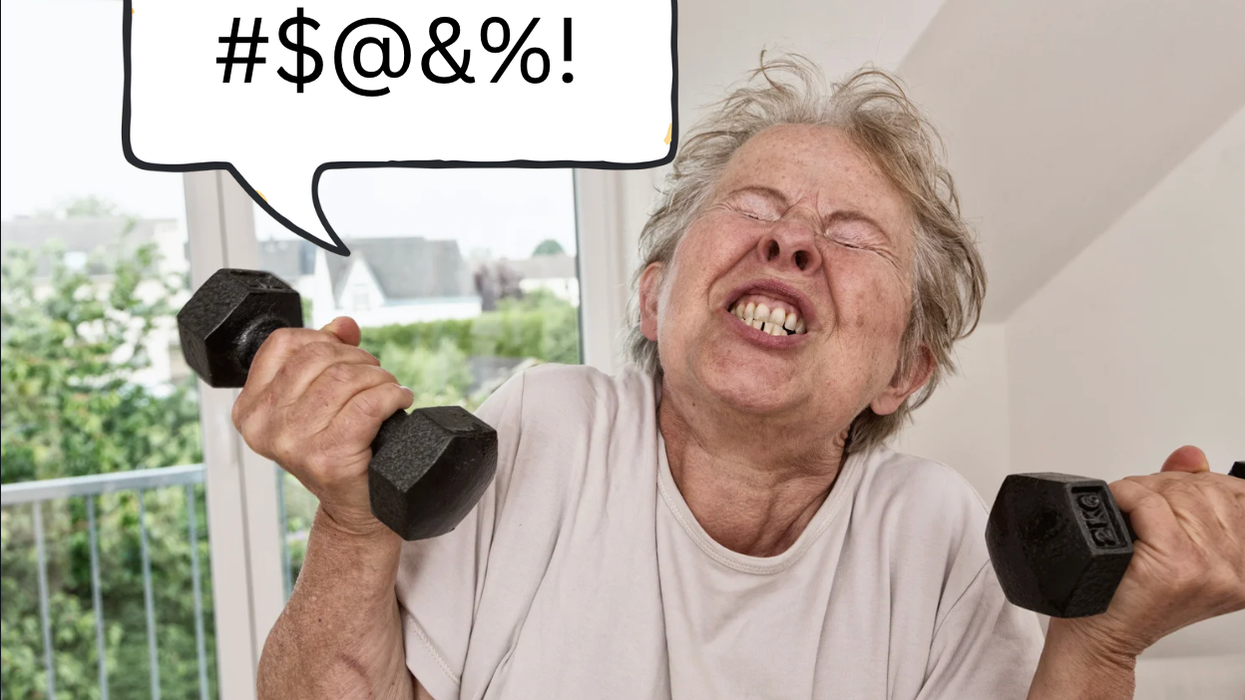





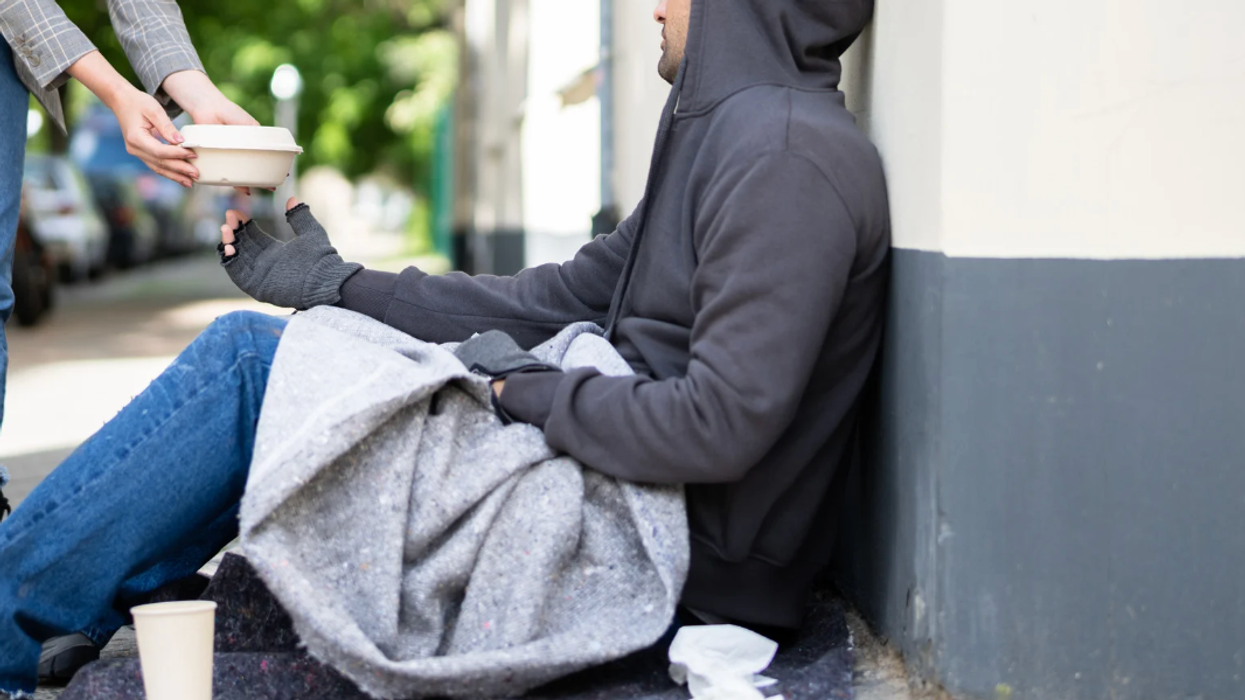
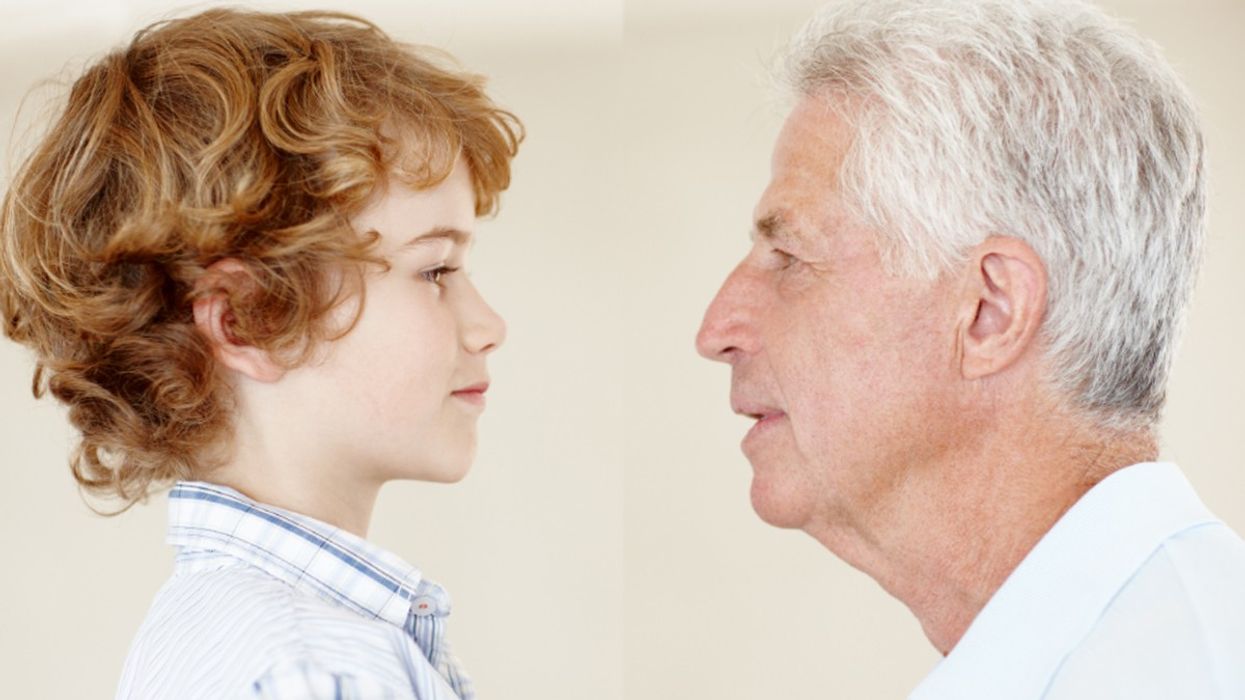

 Woman celebrating with hashtag #winning via
Woman celebrating with hashtag #winning via 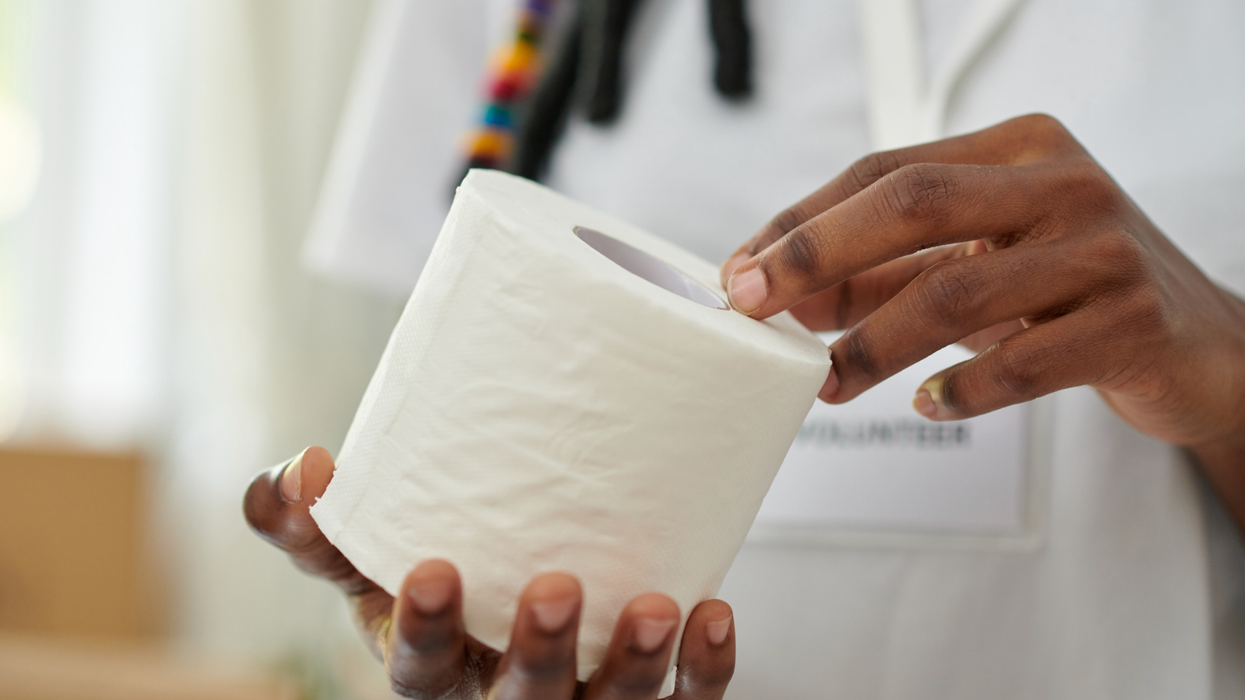
 A factory farm with rows of cropsCanva
A factory farm with rows of cropsCanva An empty hospital roomCanva
An empty hospital roomCanva Trash floating on the surface of the ocean Canva
Trash floating on the surface of the ocean Canva
 Several people scratching off lotto ticketsCanva
Several people scratching off lotto ticketsCanva A woman fans out a bunch of cash
A woman fans out a bunch of cash
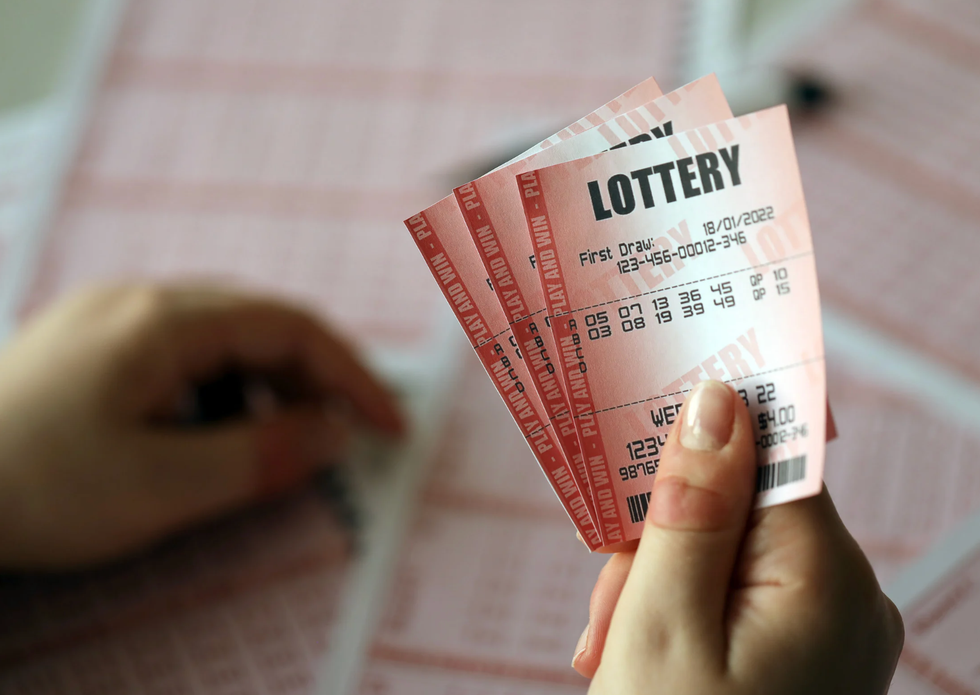 A hand holds multiple lottery ticketsCanva
A hand holds multiple lottery ticketsCanva Hundred dollar bills spread outCanva
Hundred dollar bills spread outCanva
 A subterranean waterfallCanva
A subterranean waterfallCanva

 A hotel clerk greets a guestCanva
A hotel clerk greets a guestCanva Gif of Faye Dunaway' as Joan Crawford demanding respect via
Gif of Faye Dunaway' as Joan Crawford demanding respect via  An empty rooftopCanva
An empty rooftopCanva
 A road near equatorial Atlantic OceanCanva
A road near equatorial Atlantic OceanCanva Waves crash against rocksCanva
Waves crash against rocksCanva